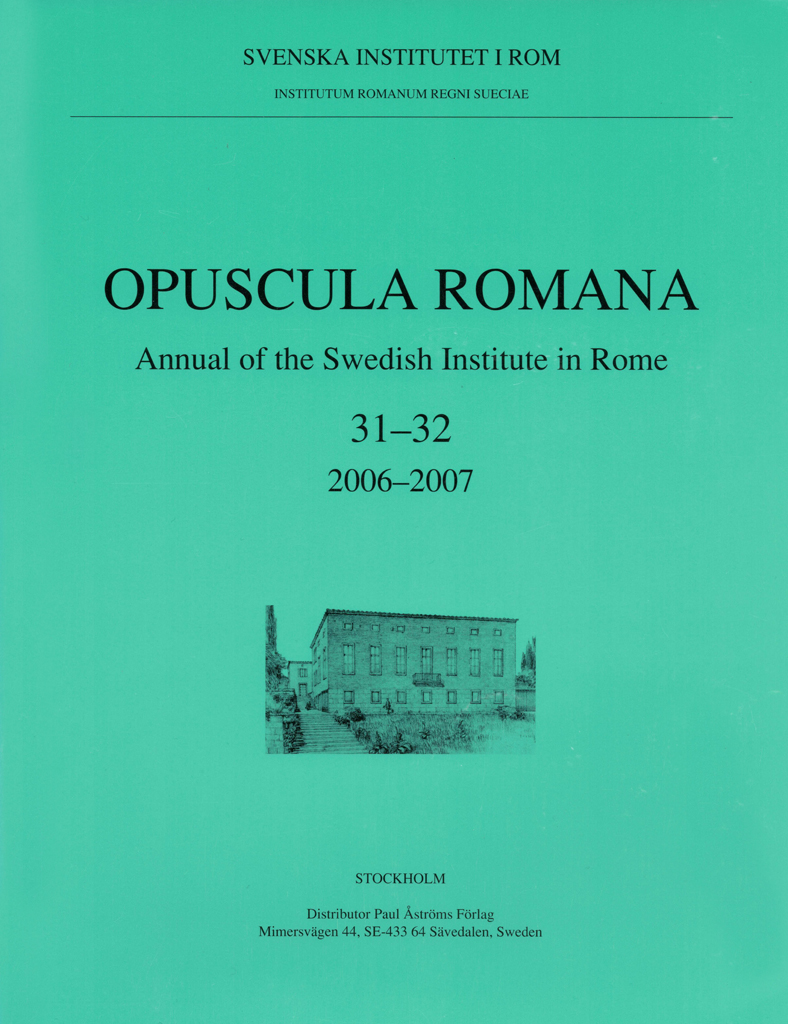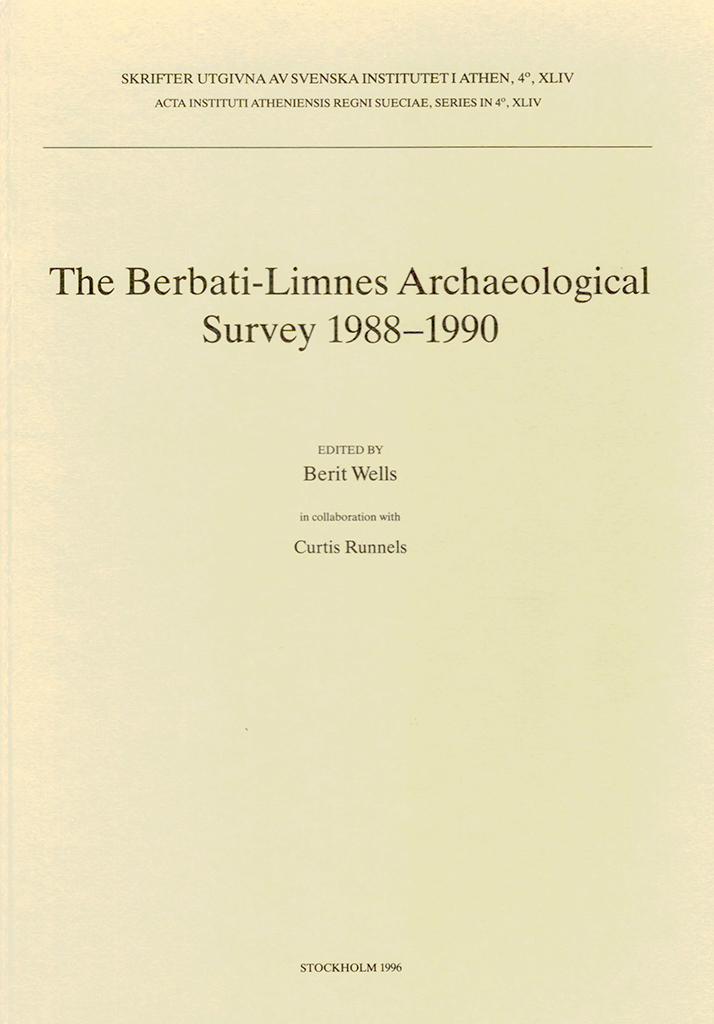Opuscula 14 is published with open access. Printed edition distributed by Eddy.se AB. Also available at Amazon.com, Adlibris, and Bokus. View volume at ERIH PLUS. From 2D and 3D documentation to 4D interpretation. Building archaeological conclusions and workflow strategies gained by remote study of Insula V 1, Pompeii By Anne-Marie Leander Touati (Lund University, Sweden), Thomas Staub (Lund University, Sweden) & Renée Forsell (Lund University, Sweden) Abstract The text describes new methods elaborated for and used in the building archaeological assessment of a city block, studied first on site, then remotely by members of the Swedish Pompeii Project. Use of a digital platform, with collected wall observations and analysis, systematic photographic documentation of all standing structures, and 3D models, allowed discussion to proceed after the fieldwork came to an end. The models provided new possibilities and new angles of approach, e.g. examining walls at any given point, studying boundary walls as wall-strings in their full extent, allowing all kinds of sectioning at will, introducing bird’s-eye views as a new perspective in study, and measuring wherever needed. The joint results obtained are summed up in a four-phase development of the use of space: the earliest structures; the late Samnite building boom (2nd…
Now available for purchase at Amazon.com, Amazon.de, Bokus.com, Adlibris.com, and Bokorder.se. Contents Johnny R. Bengtsson | Late Bronze Age handles from the Apennine settlement at Luni sul Mignone: Some chronological observations Ingela M.B. Wiman & Yvonne Backe-Forsberg | Surfacing deities in later Etruscan art and the sacellum at San Giovenale Allan Klynne | The Villa Selvasecca revisited John W. Hayes | Villa Selvasecca: the pottery finds Ebba Engström & Ragnar Hedlund | Villa Selvasecca: the coins Dominic Ingemark | Villa Selvasecca: the glass Anne-Marie Leander Touati | Interim report of the Swedish Pompeii Project: Work 2000–2004/5 in Insula V 1. Introduction Margareta Staub Gierow | The House of the Greek Epigrams V 1,18.11–12: preliminary report 2000–2004 Arja Karivieri & Renée Forsell | The House of Caecilius Iucundus, V 1,22–27: a preliminary report Henrik Boman & Monica Nilsson | The commercial establishments V 1,13; V 1, 14–16; V 1,20–21: preliminary report 2001–2004 Mark Robinson | Evidence for garden cultivation and the use of bedding-out plants in the peristyle garden of the House of the Greek Epigrams (V 1, 18i) at Pompeii Henrik Boman & Monica Nilsson | The early street and the prehistoric finds in Vicolo delle Nozze d’Argento, Pompeii Jörg…
Distributed by Astrom Editions. This volume of the Opuscula Atheniensia is dedicated to Pontus Hellström. Contents Katie Demakopoulou, Nicoletta Divari-Valakou, Ann-Louise Schallin, Erika Weiberg, Lena Sjögren & Monica Nilsson | Excavations in Midea 2003 (pp. 9-27) Izabella Donkow | A Hellenistic wreathed male head from Cyprus in the Museum of Mediterranean and Near Eastern Antiquities in Stockholm (pp. 29-38) Niklas Hillbom | The Knossos game board (pp. 39-71) Isabelle Ratinaud-Lachkar | Insoumise Asiné? Pour une mise en perspective des sources littéraires et archéologiques relatives à la destruction d’Asiné par Argos en 715 avant notre ère (pp. 73-88) Book reviews Søren Dietz | M. Lindblom, Marks and makers. Appearance, distribution and function of Middle and Late Helladic manufacturers’ marks on Aeginetan pottery (pp. 89-90) Carl Nylander | J. Boardman, Persia and the West: an archaeological investigation of the genesis of Achaemenid art (pp. 90-92) Paavo Roos | P. Debord & E. Varinlioglu (eds.), Les hautes terres de Carie (pp. 92-94) Renée Forsell | S.E. Alcock, J.F. Cherry & J. Elsner (eds.), Pausanias. Travel and memory in Roman Greece (pp. 94-95) Jan Olof Rosenqvist | C. Mango (ed.), The Oxford History of Byzantium (pp. 95-97) Books received (p. 98) The published writings…
Distributed by Astrom Editions. View record at WorldCat. The Berbati-Limnes Archaeological Survey 1988–1990 By Berit Wells & Curtis Runnels (eds.) This volume presents the results of the surface survey carried out in the Berbati Valley and on the Limnes plateau for three seasons between 1988 and 1990. Both in ancient and modern times the two areas differ considerably both economically and politically, which in part is due to the natural environment, Prosímni (Berbati) lying in a fertile valley and Limnes in a mountainous district. The introductory chapter gives a general background to the project, introducing the two villages involved, presenting the objectives and setting out the methods employed in the field. For much of its history the Berbati-Limnes area depended upon external economic systems and powers. Thus the Final Neolithic–Early Helladic pastoral economy can be explained as part of the developments in the Balkans called the Secondary Products Revolution. These changes resulted in the catastrophic soil erosions which more or less depopulated the area at the end of the EH. The recovery was slow. Only towards the end of Middle Helladic does there seem to be a new beginning, which heralds intensive use of the area in the Late Bronze…




